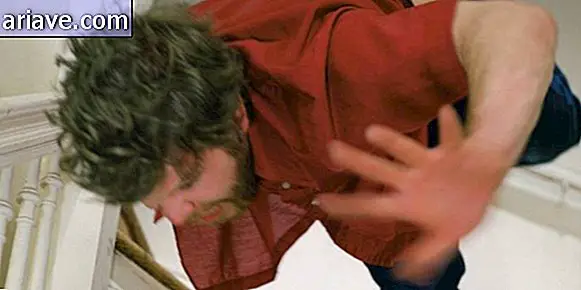Meet 5 accessories that women of the past wore under their skirts
Have you ever stopped to think of all the poor women of the past were required to wear so that they could have tiny belts while parading in those huge dresses? According to Therese Oneill of the Mental_Floss website, there was a true paraphernalia of frames and accessories that were used to shape the female body to the standards of each era.
And it wasn't just corsets and petticoats that the ladies wore under their skirts, not! Prior to the development of panties and bras, which only began to emerge in the mid-15th century, much of the clothing used under clothing was primarily intended to protect people from the cold. After that, as you can see below, some very curious items began to appear - or hide! - under the dresses. Look:
1 - Pantalets

The pieces in the image above were typically worn by women and children and were part of the wardrobes until the mid-19th century. Until then, women's underwear had no closure, as besides people at the time thought it was more healthy to leave the "intimacies" well ventilated, imagine the difficulty of lowering panties or opening the bed when going to the bathroom with all that cloth of dresses!
What's more, imagine the juggling during a ballad of the time, something like a formal dance drizzle! According to Therese, the pantalets began to become demodal after these pieces were equipped with buttons, giving women the option to protect their underwear if they wanted to.
2 - Portable Pocket

Although it looks like a stylized apron, the accessory above was a kind of portable pocket worn by women before handbags began to circulate - back in the 19th century. After all, even in the past, women felt the need to carry a lot of things with them, so nothing better than a pocket that could be hidden discreetly between the folds of the dresses!

These pockets were made of cotton and were usually hidden under the bulk of the clothes. They were probably accessed through an opening in their skirts, and Therese said it was not long before women realized they could sew a piece of fabric directly into the opening of their dresses, giving rise to their inner pockets.
3 - Pannier

You may have seen images of Marie Antoinette - Queen Consort of France and Navarre who lost her mind in 1793 - wearing super-fancy dresses, right? For this fashion arose in the Spanish court in the 17th century and eventually reached France; from there it spread to the rest of Europe.

According to Therese, the structure was strapped to the waist and it was practically an engineering work to keep the skirts of the gowns as bulky as possible. In fact, the size of the garments was indicative of the ladies' wealth, and ideally the skirts should be wide enough to make it difficult for women to pass through the doors.
4 - Crinoline

Well, as you might imagine, besides being very expensive and absurd, it should not be very practical to wear loose dresses like the ones described in the previous item. Thus, in the 19th century, women decided to adopt a simpler fashion, using less bulky dresses. Well, at least when it comes to the volume on the sides!

Although the dresses had become more modest, they were still made with a huge amount of fabric. And nothing like a beautiful frame for women to have more freedom of movement and not curl up in their skirts.
Thus came the crinoline - made up of a series of metal hoops held in place by strips of fabric - which, in addition to providing some support for the dresses, allowed the weight of the clothes to be better distributed.
5 - Polisson

As you know, it is not from today that the fashion of thin waist and big butt is out there! According to Therese, the use of crinoline began to decline in the late 19th century, and to highlight the feminine curves, the woman began to squeeze the torso and waist in tight corsets, while highlighting the backs - which, let's face it, were hidden. under so much cloth - with the polysons .

In fact, the polysons were nothing more than miniature frames that were attached to the waist and, by increasing the volume of the rear, created the impression that the waistlines were even thinner. These frames were available in a variety of options - such as a series of ruffles, pads and even metal hoops - and were much more comfortable than crinolines or panniers .
***
So, dear reader, did you know all the items we mentioned in the list above? Can you imagine what women's lives would be like if they still had to use this whole paraphernalia? Good thing you invented simpler and more comfortable pieces, right?
* Posted on 17/03/2015











